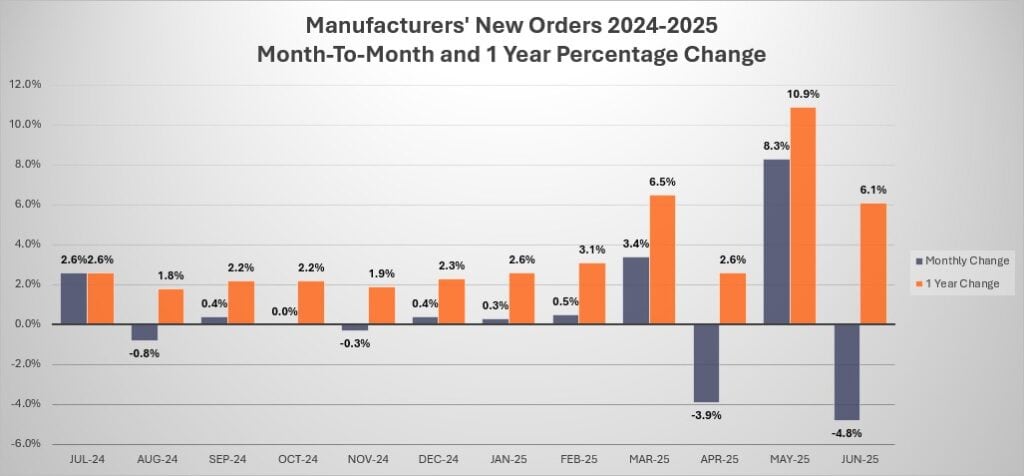New orders for manufactured goods fell 4.8% in June, signaling a slowdown in demand from businesses placing fewer orders with manufacturers compared to May.
At first glance, this drop may appear concerning, but a closer look reveals it could be less a red flag and more a recalibration. May saw an 8.3% increase in new orders for manufactured goods. Such a sharp increase was unlikely to be repeated, making a subsequent decline more of a return to trend rather than a sign of weakness.
What does all of this mean?
- The decline in June was a normalization, not a collapse
- Businesses are still ordering, but doing so with caution
- The underlying trend points to steady but fragile demand, with potential softness ahead if caution persists
While a single report does not define the full economic picture, fluctuations like these are worth monitoring. Manufacturing activity often acts as an indicator for broader economic direction and shifts in new orders can offer early insight into future business confidence and investment.
We will continue to evaluate this data alongside other key indicators to better understand the evolving landscape and its potential implications for growth, demand, and monetary policy.

*Source U.S. Department of Commerce
Disclosure
This material is provided by Gryphon Financial Partners, LLC (“Gryphon”) for informational purposes only. It is not intended to serve as a substitute for personalized investment advice or as a recommendation or solicitation of any particular security, strategy or investment product. Facts presented have been obtained from sources believed to be reliable. Gryphon, however, cannot guarantee the accuracy or completeness of such information. Gryphon does not provide tax, accounting or legal advice, and nothing contained in these materials should be taken as tax, accounting or legal advice. Individuals should seek such advice based on their own particular circumstances from a qualified tax, accounting or legal advisor.
